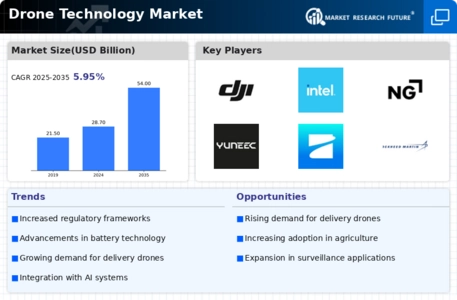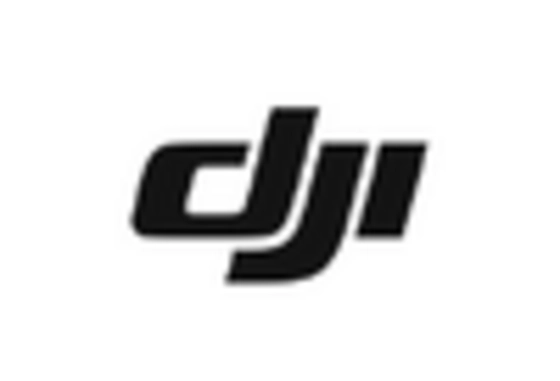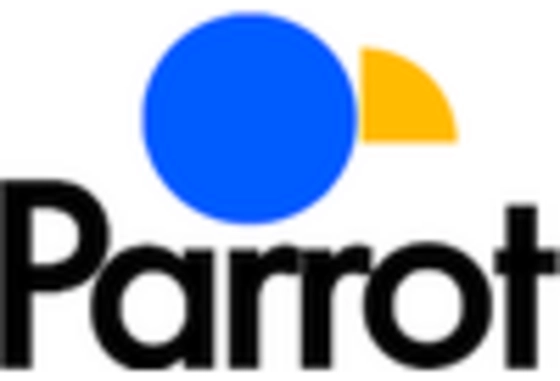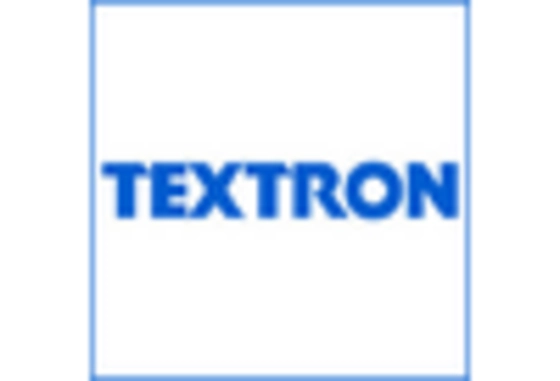The Drone Technology Market is currently characterized by a dynamic competitive landscape, driven by rapid technological advancements and increasing applications across various sectors, including agriculture, logistics, and defense. Major players such as DJI (CN), Northrop Grumman (US), and Skydio (US) are at the forefront, each adopting distinct strategies to enhance their market positioning. DJI (CN) continues to lead in consumer drones, focusing on innovation and user-friendly technology, while Northrop Grumman (US) emphasizes defense applications, leveraging its expertise in military-grade systems. Skydio (US), on the other hand, is carving a niche in autonomous drone technology, which appears to be a key differentiator in the market.
The business tactics employed by these companies reflect a concerted effort to optimize operations and adapt to market demands. Localizing manufacturing has become a prevalent strategy, allowing companies to mitigate supply chain disruptions and reduce costs. The market structure is moderately fragmented, with a mix of established players and emerging startups, each contributing to a competitive environment that fosters innovation and collaboration.
In August 2025, DJI (CN) announced the launch of its latest drone model, which integrates advanced AI capabilities for enhanced obstacle avoidance and autonomous flight. This strategic move not only reinforces DJI's commitment to innovation but also positions the company to capture a larger share of the growing commercial drone market, where demand for sophisticated technology is surging. The introduction of AI-driven features is likely to attract a broader customer base, including industries that require precision and reliability.
In September 2025, Northrop Grumman (US) secured a significant contract with the U.S. Department of Defense to supply advanced surveillance drones. This contract underscores the company's strategic focus on defense and highlights its ability to meet stringent military requirements. Such partnerships not only bolster Northrop Grumman's revenue streams but also enhance its reputation as a leader in defense technology, potentially influencing future government contracts.
In July 2025, Skydio (US) entered into a partnership with a major logistics firm to develop drones specifically designed for last-mile delivery. This collaboration signifies a strategic pivot towards commercial applications, aligning with the growing trend of drone utilization in logistics. By leveraging its autonomous technology, Skydio aims to streamline delivery processes, which could set a new standard in the logistics sector and enhance operational efficiency.
As of October 2025, the competitive trends in the Drone Technology Market are increasingly defined by digitalization, sustainability, and the integration of artificial intelligence. Strategic alliances are becoming more prevalent, as companies recognize the value of collaboration in driving innovation and expanding market reach. Looking ahead, competitive differentiation is likely to evolve, shifting from traditional price-based competition to a focus on technological innovation, reliability in supply chains, and sustainable practices. This transition may redefine the competitive landscape, compelling companies to invest in R&D and forge strategic partnerships to maintain their market positions.

















Leave a Comment